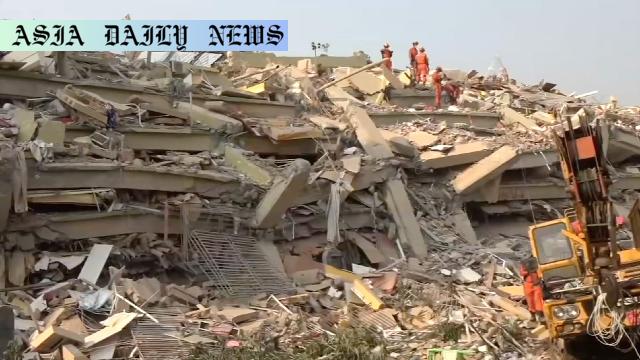Myanmar earthquake – The UN migration agency appeals for urgent international assistance following last week’s devastating quake.
Myanmar earthquake caused severe impacts in Mandalay, deteriorating social order and hygiene conditions.
Over 3 million were displaced prior to the quake; the disaster risks further destabilizing the region.
UN agencies received an unprecedented request from Myanmar’s military, signaling the damage’s severity.
Relief workers seek access to restricted areas to deliver aid to affected communities.

Introduction
The recent earthquake that struck Myanmar has left behind a trail of destruction, particularly in Mandalay, the nation’s second-largest city. The situation not only poses challenges to immediate relief operations but also raises concerns about the region’s long-term stability. The International Organization for Migration (IOM) has issued an urgent call for international aid to help address the widespread damage and support those affected by the calamity. With over three million people already displaced before the quake, this disaster has exacerbated an already-dire humanitarian crisis.
Impact on Mandalay and Immediate Needs
The epicenter of the earthquake, close to Mandalay, has become the focal point of devastation. Many residents have been forced to sleep outdoors due to the destruction of their homes, leading to significant concerns about hygiene and social order. Parks, streets, and open spaces have turned into makeshift shelters. The deteriorating living conditions could lead to disease outbreaks, compounding the struggles of an already-displaced population. Emergency relief efforts must focus on providing adequate shelter, clean water, and food supplies to those in need.
UN Agencies and Myanmar’s Military Collaboration
For the first time, Myanmar’s military has formally requested assistance from UN agencies, highlighting the earthquake’s unprecedented scale of destruction. This collaboration opens new opportunities for humanitarian organizations to access military-controlled areas, which have traditionally been restricted. However, relief workers face logistical and bureaucratic challenges, as they push to deliver aid to these isolated regions. International cooperation will be crucial in ensuring transparency and facilitating swift assistance.
A Humanitarian Crisis Exacerbated
Prior to the earthquake, Myanmar was already grappling with the displacement of over three million individuals due to ongoing conflicts and instability. The disaster has further burdened an already overstretched humanitarian system. Assistance is needed not only for immediate relief but also for long-term recovery and rebuilding efforts. International donors and organizations must coordinate efficiently to ensure that resources are utilized effectively in addressing both short-term and sustained needs.
Call for Global Solidarity
This earthquake serves as a stark reminder of the vulnerabilities faced by communities living in crisis-stricken regions. UN agencies and the IOM urge the global community to step forward with financial, logistical, and technical assistance. Climate resilience, disaster preparedness, and conflict mitigation should form the cornerstone of future support plans for Myanmar, ensuring that the country is well-equipped to face similar challenges in the future.
Commentary
Understanding the Depth of the Crisis
The recent earthquake in Myanmar has laid bare the fragility of regions already grappling with socio-political challenges and internal conflicts. The fact that millions were displaced even before the quake shows that the disaster didn’t just create new problems, it compounded existing ones. The displacement of individuals post-quake is not merely a logistical issue—it’s a violation of basic human dignity. Relief efforts urgently need to focus on providing security and stability to these affected regions.
The Role of International Collaboration
One of the most striking developments from this disaster is the Myanmar military’s unprecedented request for UN assistance. This act should not only be met with swift action but also with cautious optimism. International humanitarian organizations must navigate the sensitive balance between offering assistance and ensuring their aid reaches those who need it most. The call for allowing relief workers into restricted, military-controlled areas is crucial—it could lay the foundation for greater trust and collaboration between Myanmar’s authorities and the global community.
A Call to Reflect and Act
If there’s one takeaway from this crisis, it’s the urgent need for preparedness. As disasters become more frequent due to climate change and other factors, nations must build resilient systems capable of responding swiftly to emergencies. The international community plays a pivotal role here, not just in financial aid but in transferring knowledge and technology for disaster management. Myanmar’s quake is a wake-up call for global solidarity and cooperation in addressing humanitarian emergencies with compassion and efficiency.


